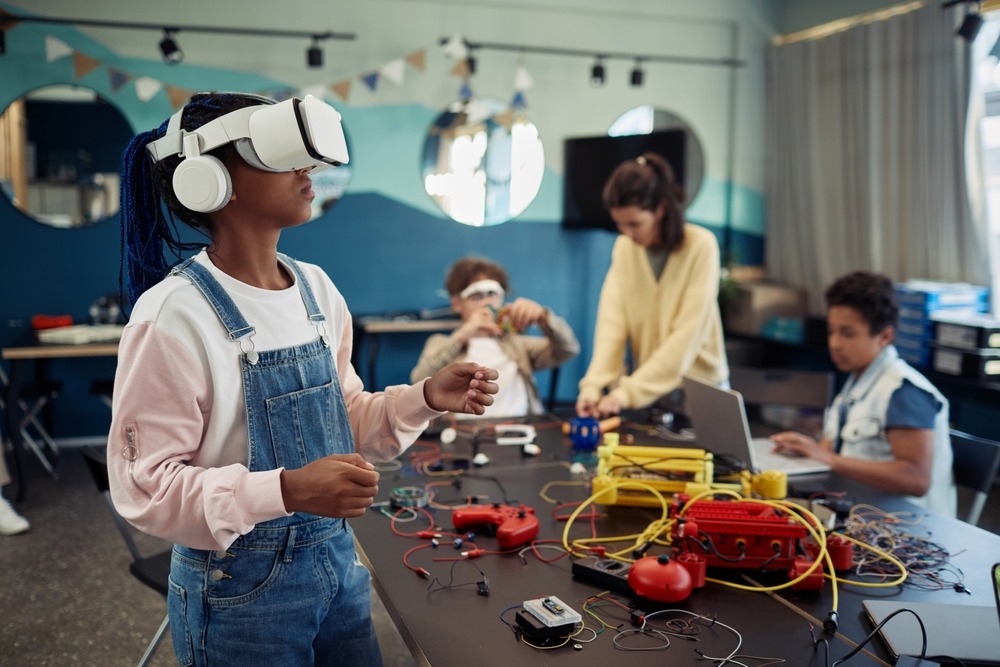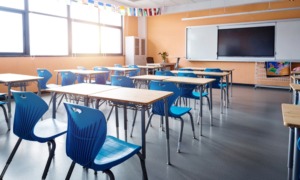This story was produced by The Hechinger Report, a nonprofit, nonpartisan news outlet focused on education.
Clouds of doom continue to hover over the debate about teens’ mental health and the role of technology. This spring, the warnings come from the bestselling book “The Anxious Generation” by sociologist Jonathan Haidt. Some parents and educators are calling for a ban on smartphones and laptops in schools. Others are trying to press pause on the panic by pointing to research that needs a longer look.
People feel forced into binary camps of “ban tech” and “don’t ban tech.”
But there is a way to reset the conversation that could help parents, educators and kids themselves make better choices about technology. As writers and researchers who focus on the science of learning, we see a gaping hole in the debate thus far.
Are we asking the right questions?
The problem is that decision-makers keep relying on only two sets of questions and data:
- One set focuses on questions about how youth are feeling (not so great).
- The other focuses on how kids are using their time (spending hours on their phones).
A third set of questions is missing and needs to be asked:
- What and how are children and youth learning?
- Is technology aiding their learning or getting in the way?
Think of data on tech and learning as the third leg of the stool in this debate. Without it, we can’t find our way toward balance.
[Related: Teens are looking to AI for information and answers, two surveys show]
Haidt’s book focuses primarily on well-being, and it’s great that he recognizes the research on the importance of play and exploration offline to helping children’s mental health. But play and exploration are also critical for learning, and parents and educators need more examples of the many different places where learning happens, whether on screen, off-screen or some hybrid of the two.
Parents are at risk of becoming either too protectionist or too permissive if they don’t stop to consider whether technology is affording today’s kids opportunities to explore and stretch their minds.
Harvard professor Michael Rich, author of the recent book “The Mediatrician’s Guide,” argues that our children are growing up in a world where they move seamlessly between physical and digital information, with mountains of experiences and learning opportunities at their fingertips. This is their reality. Today, even children from under-resourced environments can virtually visit places that in the past were well beyond their reach.
Many parents and teachers know their kids can gain valuable skills and knowledge from using different forms of tech and media. In fact, they are already factoring in the potential for learning when they make decisions about technology. They restrict phones and laptops in certain contexts and make them available in others, depending on what they believe will provide a good learning environment for their children at different ages and stages.
Technology can be integral to the learning process
Sometimes the technology, and the way kids explore and build things with it, is integral to what kids need to learn. This year, for example, students have been working in Seattle public libraries with University of Washington professor Jason Yip to build tools and games intended to help other kids identify and avoid disinformation. One game is an online maze built within the world of “Minecraft” that shows what it feels like to fall down rabbit holes of extreme information. “Digital play can open up a number of potentials that allow children to experience unknown and difficult situations, such as misinformation, and experiment with decision-making,” Yip said.
[Related: Horticulture, horses and ‘Chill Rooms’: One district goes all-in on mental health support]
More focus on the effect of technology on learning — good and bad — is needed at all ages. Studies of young children show that when parents are distracted by their phones, they are less able to help their kids build the language skills that are key for learning how to read. Maybe parents should model different behaviors with their phone use. Also consider a study at the University of Delaware in which researchers read books to 4-year-olds live, via video chat or in a prerecorded video. No significant differences in learning were found between the children reading live or via video chat. This study and others provide clear evidence that children can learn when people read storybooks to them online.
Make better decisions: Explore these three perspectives
Instead of fighting with children over smartphone use, we should be making sure that there are enough teachers and mentors to help all kids use those phones and laptops to support learning, whether they are collaborating on science fair projects or creating video book trailers for YouTube. Kids need teachers and parents who can give them opportunities to explore, play and grapple with hard things in both the digital world and the real world.
[Related: What are wellness rooms, and why do schools need them?]
Our society is good at creating polarization. But we don’t have to devolve into extreme “ban” or “don’t ban” positions on smartphones, laptops or other technology today.
Parents and teachers should make decisions about technology after viewing the issue from three perspectives:
- How much the kids are using the devices.
- How the devices are affecting kids’ well-being.
- And — the missing leg — how the devices are affecting their learning.
Maybe adding this new missing leg could even help adults see more than just an “anxious generation” but also one hungry to learn.
***
Kathy Hirsh-Pasek, Roberta Golinkoff and Lisa Guernsey are authors of several books on children’s learning and founders of The Learning Sciences Exchange, a fellowship program and problem-solving platform at New America that brings together experts in child development research, media and journalism, entertainment, social entrepreneurship and education leadership.
This story about teens and technology was produced by The Hechinger Report, a nonprofit, independent news organization focused on inequality and innovation in education. Sign up for Hechinger’s newsletter.




























